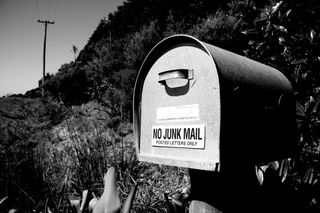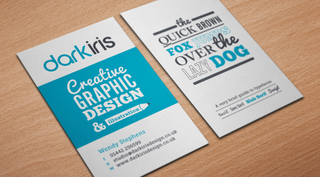So you’ve built yourself an online portfolio. The first version wasn’t that great, but you followed our tips for how to improve your portfolio dramatically and now it’s the best it could possibly be.
Now you want people to check it out, share it, comment on it. So what do you do next?
In this article, we gather together some tips on how to get more people looking at and engaging with your portfolio. Let us know how you get on in the tips below!
01. Tell people about it directly

Creating an online portfolio, or indeed any website, isn’t generally a case of ‘build it and they will come’. There are billions of things to look at on the web, and people don’t go hunting for cool new portfolios to check out; you have to go to them.
So email or DM anyone you think will not only look at your portfolio but share it and have something useful to say about it. These might be friends, co-workers, clients, or any other members of your extended network. They needn’t necessarily be creatives. A share from the CTO of a well-known company you’ve done work for, for example, could be far more valuable to you than even a “rockstar” designer.
The important thing is, when you message them, explain (politely and in friendly tones) exactly what it is you’d like them to do: eg “It would be great if you could take a look at it and, if you think it’s worthy, share it on your Facebook page.” Make your message as personal and non-spam-like as possible.
Unfortunately, many designers just mass-DM their contacts and say something like: “Big news! My portfolio is live, here’s the URL”. That is not going to cut it. You need to empathise with the person you’re messaging, recognise you’re asking them to do you a favour, and rewrite accordingly.
02. Update it regularly
If you just keep saying to people: “Look at my portfolio! Look at my portfolio” you’ll come off like somewhere between an annoying child and a spambot. So you need to vary up your messaging, and the best way to do that is be regularly updating your portfolio with new work. Of course, that shouldn’t be done to the detriment of quality; if the new work isn’t good work, then don’t include it. Plus you’ll always have to check with clients first. But if all of this means you’ve nothing new to post, then why not start a side project?
03. Share it physically as well as digitally

If you really want to get your portfolio out there and talked about, you need to talk to people in the “real world” as well as the virtual one.
Where can you find fellow designers? Where *can’t* you find them? Co-working spaces, design conferences, design meetups, Behance portfolio reviews... there are an endless supply of opportunities to interact with fellow creatives, you just have to grasp the nettle and do it. (And make sure your portfolio URL is on that business card you give out.)
When people promise they’ll check out your site, though, how do you know they’ll follow through? You don’t, but here’s a trick: ask for a critique. Creatives love being asked to give constructive feedback on others’ work; it’s essentially a form of flattery, stressing that you value their opinion. Just make sure you’re ready to handle any criticism that comes back!
04. Contact design gallery blogs
Many design blogs specialise in showing galleries of new work, and they’re often hungry for contributions. If you can follow their submission guidelines to the letter, you’ll make them happy bunnies indeed. If they have no submission guidelines, email them and ask politely if they take submissions, and if so what the guidelines are. (PS: don’t email us though: we’re not really that kind of blog!)
05. Write a blog yourself
Whether or not other people are willing to write about your work, there’s nothing from stopping you from doing so. A personal viewpoint will often be more interesting anyway, especially if you can offer useful background into the work itself and how you put the portfolio together.
The more practical takeaways for other designers there are, the more they’ll want to read and share your post and, by extension, your portfolio. If you don’t have blog functionality on your online portfolio, then why not add it now? It will certainly help you with SEO. Alternatively, just use a blogging platform like Medium, which is free and very easy to set up with, and/or write guest blogs for other people’s sites.
06. Add links everywhere

The joy of our digital age is that every time you message someone or post something online, you can subtly incorporate a free ad for whatever it is you’re promoting. So ask yourself: are you including a link to your portfolio absolutely everywhere you can think of?
It should be there, prominently, in your email sign-off. It should be in your Twitter, Facebook, Dribbble and Instagram profiles. It should be in a Pinned tweet at the top of your Twitter feed, the head of your LinkedIn page, in the centre of your online and offline business cards… In short, it should be everywhere you can think of, along with a prominent call to action to encourage people to click through.

Thank you for reading 5 articles this month* Join now for unlimited access
Enjoy your first month for just £1 / $1 / €1
*Read 5 free articles per month without a subscription

Join now for unlimited access
Try first month for just £1 / $1 / €1
Get the Creative Bloq Newsletter
Daily design news, reviews, how-tos and more, as picked by the editors.
Tom May is an award-winning journalist and editor specialising in design, photography and technology. Author of the Amazon #1 bestseller Great TED Talks: Creativity, published by Pavilion Books, Tom was previously editor of Professional Photography magazine, associate editor at Creative Bloq, and deputy editor at net magazine. Today, he is a regular contributor to Creative Bloq and its sister sites Digital Camera World, T3.com and Tech Radar. He also writes for Creative Boom and works on content marketing projects.
